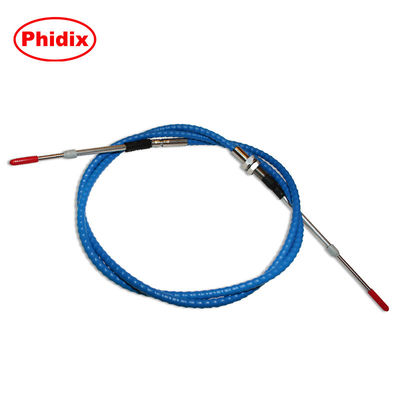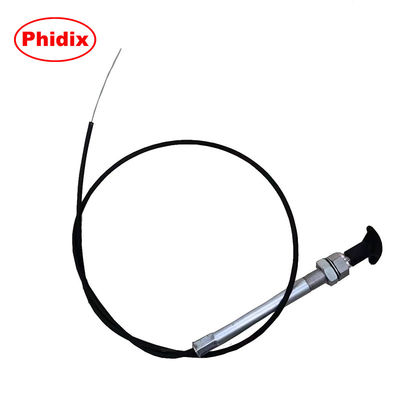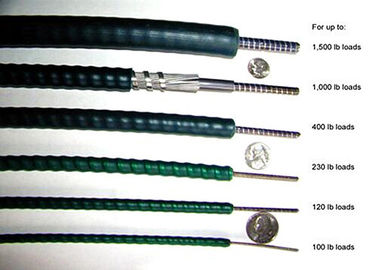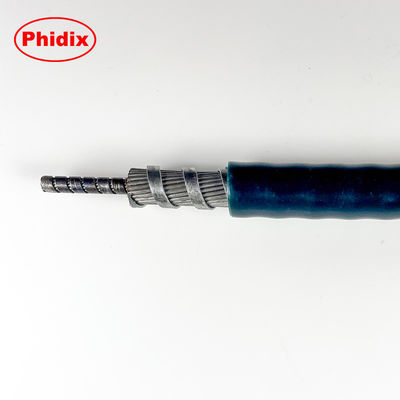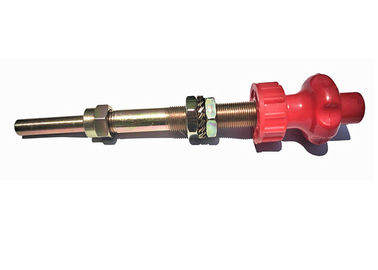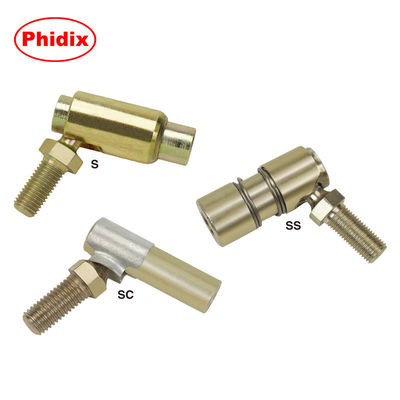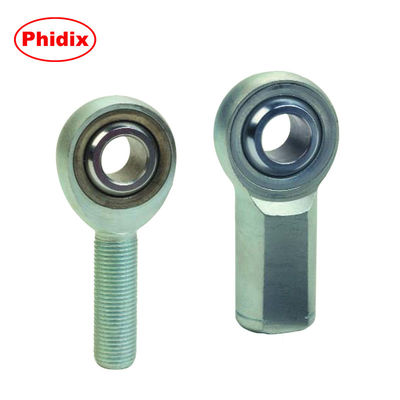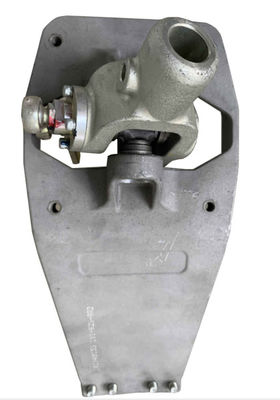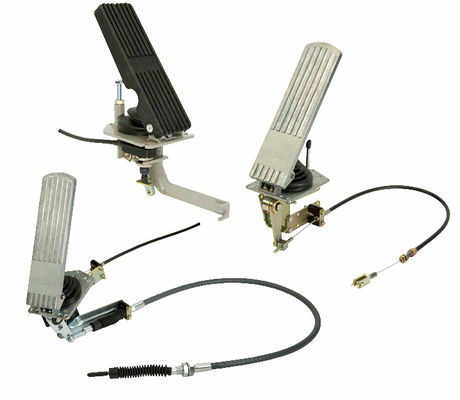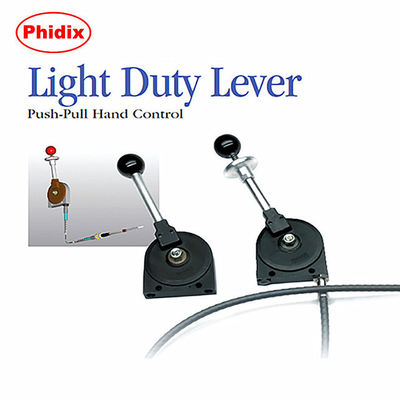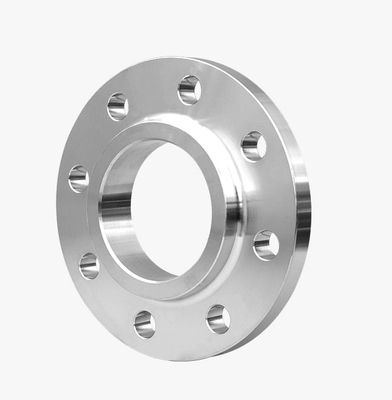As automotive manufacturing evolves to accommodate new powertrain technologies and increasing customization demands, flexible shafts have become critical components in balancing efficiency with adaptability. This article addresses five essential questions about flexible shafts in automotive manufacturing, providing insights for engineers and procurement specialists seeking to optimize their assembly processes.
What Makes Flexible Shafts Essential in Modern Automotive Manufacturing?
Are flexible shafts necessary for new powertrain vehicles?
Yes, flexible shafts are crucial for manufacturing facilities that need to accommodate multiple powertrain types on the same assembly line, enabling the transition between traditional ICE vehicles and electric or hybrid alternatives.
The automotive industry faces significant challenges as it moves toward new powertrain technologies. Since the internal combustion engine has dominated for over a century, the entire manufacturing infrastructure is built around this specific technology. Transitioning to new powertrain vehicles requires manufacturing systems that are both flexible and efficient—a balance that properly designed flexible shaft systems can help achieve.
From a technical perspective, flexible shafts can be designed with varying parameters along their length, including torsional stiffness, bending rigidity, and diameter changes. These properties enable manufacturers to create shaft systems that can adapt to different power transmission requirements without sacrificing performance.
Case Study: European Automaker's Transition Challenge
Pain Point: A European automotive manufacturer needed to incorporate electric vehicle production into their existing assembly facility without disrupting ongoing ICE vehicle production.
Solution: The company implemented modular assembly stations with flexible shaft systems from Mechanical Control Cable that could accommodate multiple powertrain configurations.
Result: Production flexibility increased by 37%, allowing simultaneous assembly of different vehicle types while maintaining quality standards and reducing changeover time by 45%.
How Should Manufacturers Select the Right Flexible Shaft Design?
What factors determine flexible shaft performance in automotive applications?
Shaft performance depends primarily on material properties, geometric design (solid vs. hollow), and the specific mechanical requirements of the application, including torque capacity, critical speed, and deflection limits.
The design process for flexible shafts must account for both strength and stiffness considerations. While strength ensures the shaft can withstand applied forces without failure, stiffness prevents excessive deflection that could lead to misalignment and decreased efficiency3. When selecting flexible shaft systems, manufacturers must calculate maximum shear stress using the formula:
τₘₐₓ = 16T/(πd³)
Where T represents the twisting moment and d represents the shaft diameter.
For hollow shafts, which are often preferred for their superior strength-to-weight ratio, the formula becomes:
τₘₐₓ = 16T/[π(dₒ⁴-dᵢ⁴)/dₒ]
Where dₒ is the outer diameter and dᵢ is the inner diameter.
Case Study: Precision Component Manufacturer
Pain Point: A precision component manufacturer struggled with excessive vibration in their drivetrain assembly process, causing quality issues and increased warranty claims.
Solution: Engineers redesigned the flexible shaft system with optimized torsional stiffness and incorporated proper damping mechanisms, sourcing specialized components from qualified suppliers.
Result: Vibration decreased by 68%, assembly precision improved by 22%, and warranty claims related to drivetrain issues dropped by 41% within six months of implementation.
How Do Flexible Shafts Impact Manufacturing Efficiency?
Can flexible shafts improve assembly line productivity?
Yes, properly designed flexible shafts enable faster changeovers between different vehicle models and powertrain types, reducing downtime and increasing overall manufacturing throughput.
To achieve effective flexibility in automotive assembly, manufacturers need to focus on four key areas: mix flexibility, new product flexibility, modification flexibility, and volume flexibility. Flexible shafts contribute directly to these areas by allowing for quick adaptations to different vehicle requirements without extensive retooling or line modifications.
The efficiency of flexible shaft systems can be quantified through power transmission capacity, which is proportional to the cube of the shaft diameter and directly proportional to rotational speed:
P ∝ D³ × N
Where P is power, D is diameter, and N is rotational speed.
Case Study: Japanese Automotive Supplier
Pain Point: A tier-one supplier needed to increase production capacity by 30% while accommodating three new vehicle models on their existing assembly line.
Solution: The supplier implemented a modular assembly system with advanced flexible shaft technology that could be quickly reconfigured for different vehicle specifications.
Result: The supplier achieved a 42% increase in production capacity, reduced model changeover time from 6 hours to 45 minutes, and decreased assembly errors by 17%.
What Role Do Flexible Shafts Play in New Powertrain Technologies?
How are flexible shafts adapting to electric vehicle requirements?
Flexible shafts for EVs require different torsional and bending properties to handle the instant torque delivery of electric motors, along with specialized materials and designs to address unique NVH (Noise, Vibration, Harshness) characteristics.
The transition toward electric and hybrid vehicles presents significant challenges for manufacturing systems. According to research, the "future-proofing" of assembly lines requires flexible components that can accommodate both traditional and new powertrain technologies. Flexible shafts need to be designed with materials and geometries that can handle the distinctive operational characteristics of electric powertrains.
From a technical standpoint, modeling these shafts requires consideration of torsional stiffness, bending rigidity, density, shear modulus, Young's modulus, and diameter variations along the shaft length. These parameters must be optimized differently for electric powertrains compared to traditional ICE applications.
Case Study: Electric Vehicle Startup
Pain Point: An EV startup faced challenges integrating their high-torque powertrain into a manufacturing process designed for conventional vehicles.
Solution: Engineers collaborated with specialized flexible shaft suppliers to develop custom components with enhanced torsional capacity and precise energy transfer characteristics.
Result: The new shaft design reduced energy losses by 12%, improved vehicle range by 7%, and eliminated early-life drivetrain failures that had plagued earlier production runs.
How Can Manufacturers Balance Flexibility and Durability?
What is the optimal approach to flexible shaft longevity in mixed-model assembly?
The optimal approach combines proper material selection with precise dimensional engineering and strategic placement of support points, all while maintaining sufficient flexibility for diverse manufacturing requirements.
In manufacturing environments where shafts must accommodate multiple vehicle models, durability becomes a significant concern. Engineers must balance flexibility needs with longevity requirements, often by carefully designing support systems. Shaft supports can be modeled as ideal or using stiffness and damping matrices, with variations in location, type, and number of supports affecting overall performance.
For critical applications, calculating the whirling or critical speed using Dunkerley's empirical formula provides important insights into operational limitations:
1/fn² = 1/f1² + 1/f2²
Where fn is the critical speed and f1 and f2 are natural frequencies of the system.
Case Study: German Luxury Automaker
Pain Point: A luxury vehicle manufacturer experienced premature flexible shaft failures when transitioning between standard and performance vehicle variants on the same assembly line.
Solution: The manufacturer implemented an advanced shaft system with dynamically adjustable parameters and integrated smart monitoring technology.
Result: Shaft longevity increased by 230%, unplanned maintenance decreased by 64%, and assembly line flexibility improved to accommodate eight different vehicle variants with minimal changeover time.
Conclusion
Flexible shafts represent a critical component in the evolution of automotive manufacturing, particularly as the industry navigates the transition to new powertrain technologies. By addressing these five key questions, manufacturers can make informed decisions about shaft selection, design, and implementation that balance the competing demands of flexibility and efficiency.
For automotive manufacturers seeking to optimize their assembly processes through advanced flexible shaft systems, partnering with specialized suppliers like Mechanical Control Cable can provide the expertise and components necessary to achieve both immediate performance improvements and long-term manufacturing adaptability.
As the automotive industry continues to evolve, flexible shaft technology will remain at the forefront of enabling manufacturing systems that can efficiently produce diverse vehicle types while maintaining the quality and reliability that consumers demand.

 Your message must be between 20-3,000 characters!
Your message must be between 20-3,000 characters! Please check your E-mail!
Please check your E-mail!  Your message must be between 20-3,000 characters!
Your message must be between 20-3,000 characters! Please check your E-mail!
Please check your E-mail! 
